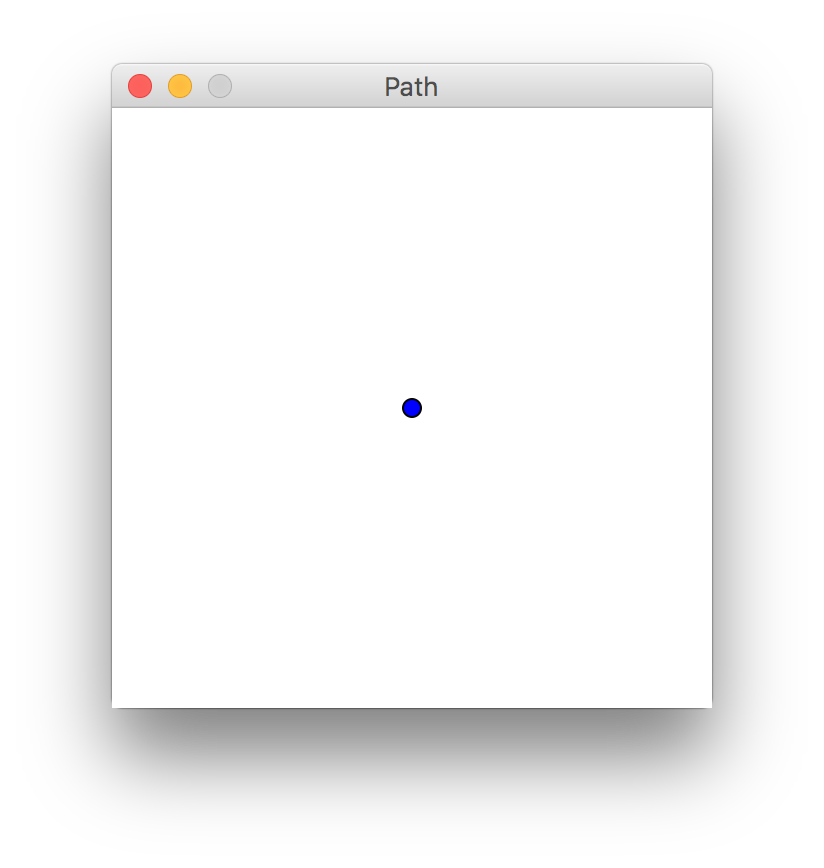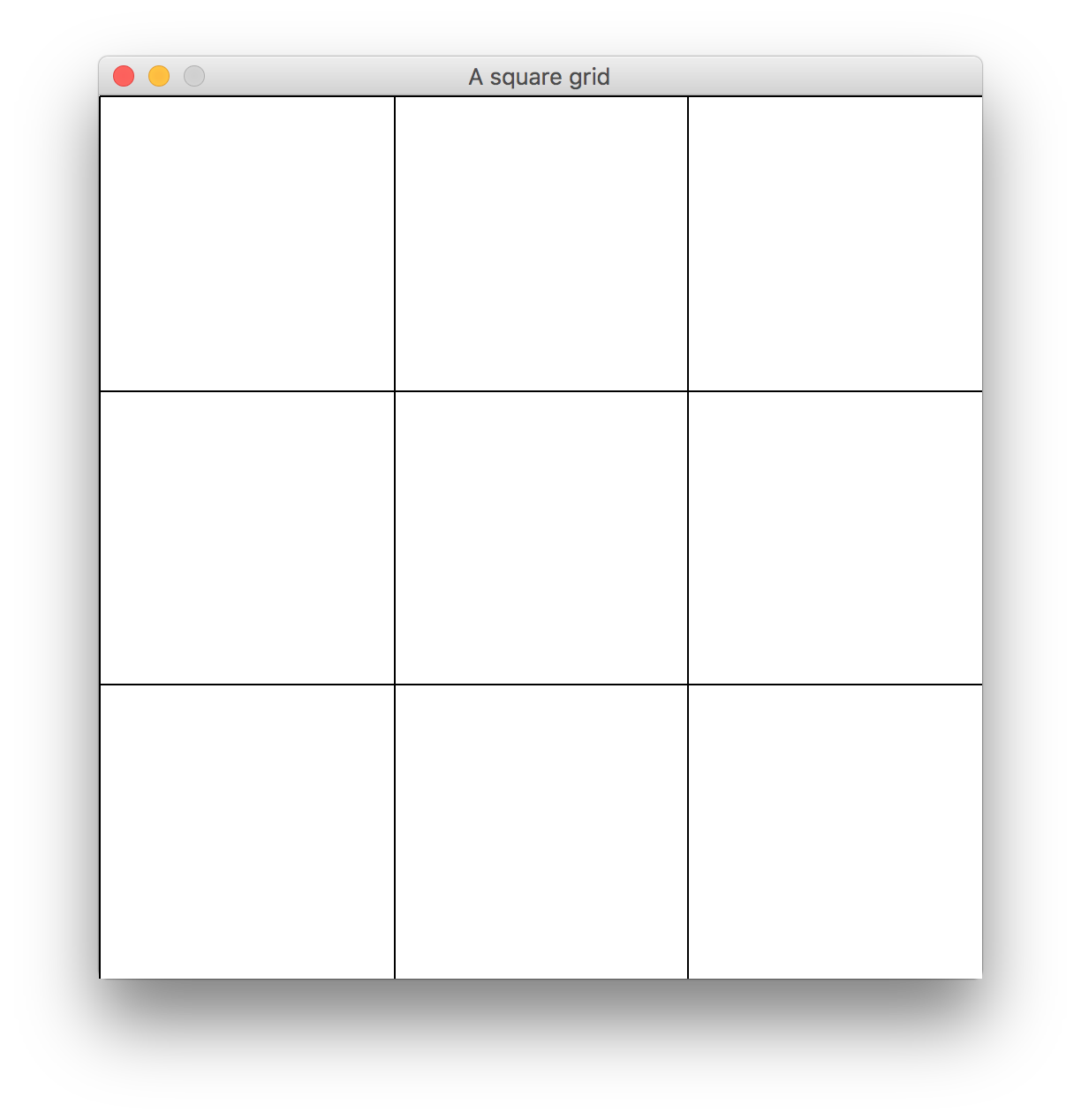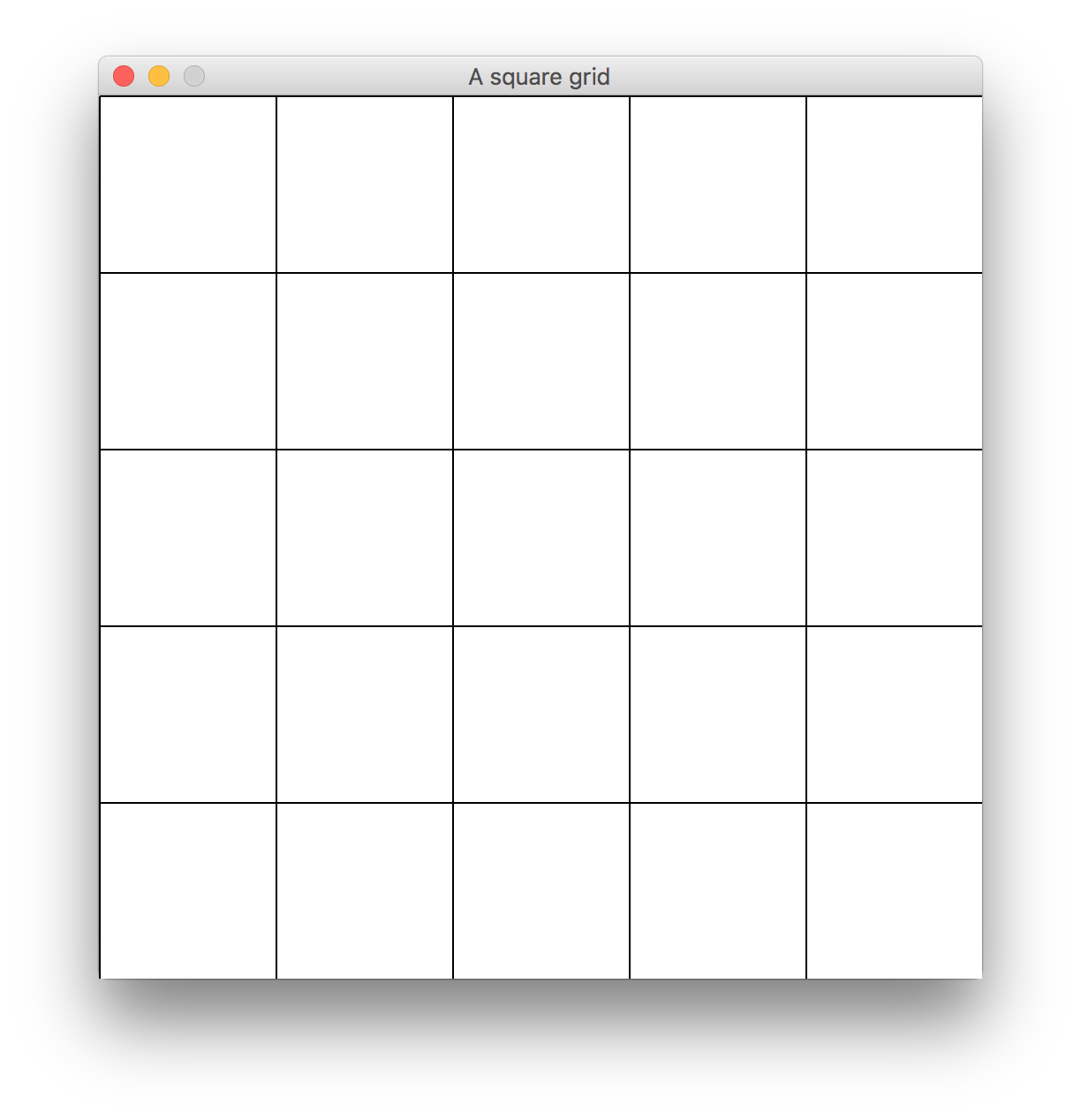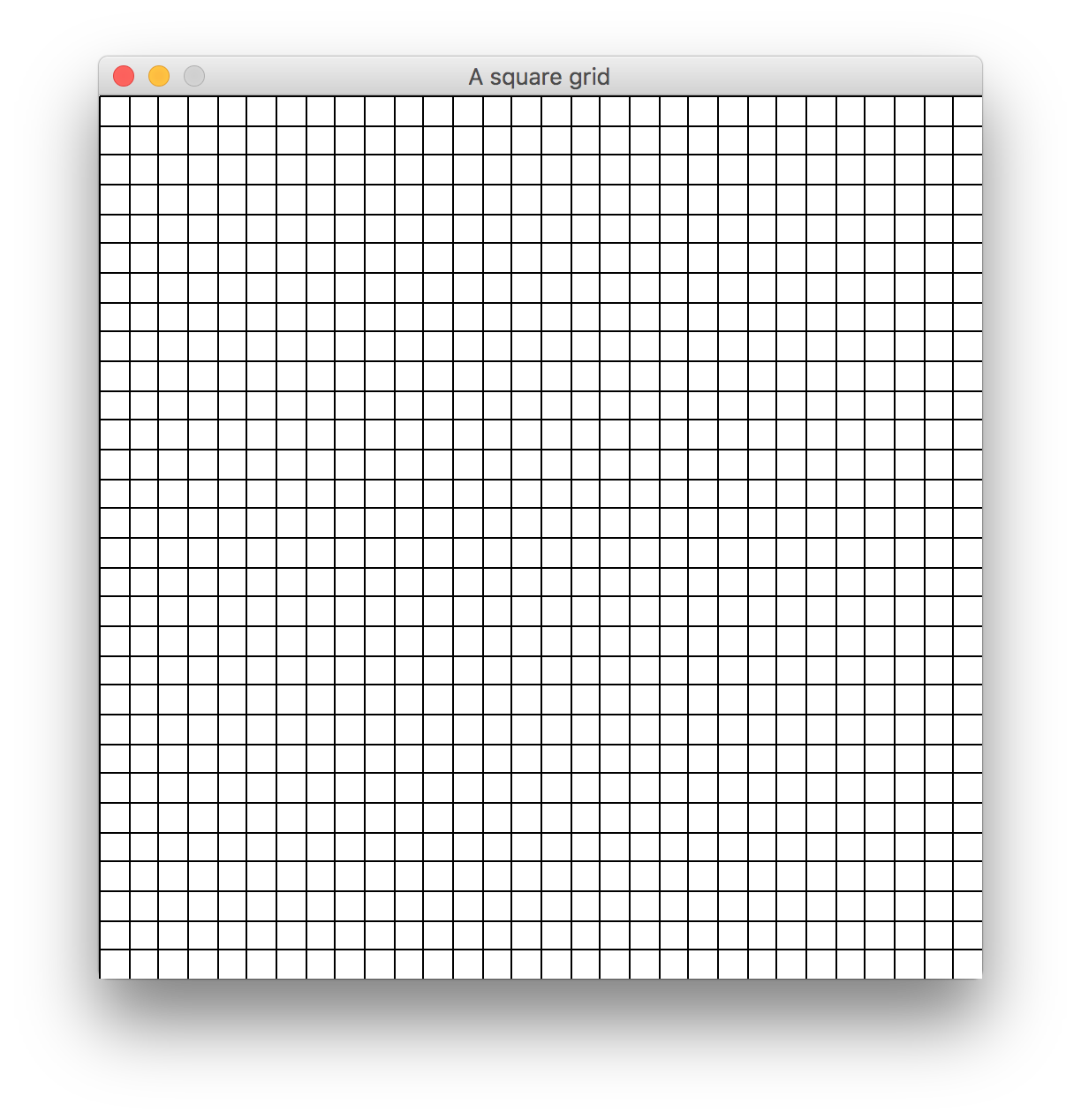Finish the following programs from Lab 3 and cut and paste their code definitions into your assign3.py file:
- flag()
- target()
- design()
- bug()
- move()
- fence() — the picket fence version from exercise 10
- gradient()
The path() program below uses the setCoords method to specify a new coordinate range from -10.0 to 10.0 for both the x- and y-axes. This causes the y-axis to start from -10.0 at the bottom of the window and increase going up. This means the origin (0, 0) is now located at the center of the window, rather than the upper left corner, since each axis goes from -10.0 to 10.0.
def path():
howMany = eval(input("How many line segments? "))
win = GraphWin("Path", 300, 300)
win.setCoords(-10, -10, 10, 10) # xmin, ymin, xmax, ymax
# draw a big blue point in the center of the window
center = Circle(Point(0, 0), 0.3)
center.setFill("blue")
center.draw(win)
# more code goes here

Finish the program so that each time
the user clicks on a point, a new line segment is drawn from the previous
point to the new point (starting from the origin in the case of the first
point clicked). Each time a new line segment is added to the path, the
program should report the total length of the path so far, rounded to
three decimal places, using the distance formula (shown below) to calculate
the length of each new line segment.

For example, after clicking on five different points, the output of the program might look something like this:
>>> path() How many line segments? 5 Total length of the path is now 7.535 Total length of the path is now 16.442 Total length of the path is now 23.917 Total length of the path is now 32.947 Total length of the path is now 41.474

Write a program called drawgrid() to draw a grid in a 500 × 500 pixel square graphics window. The program should ask the user how many grid cells to display along a side. It should then use a for-loop to draw the vertical grid lines, and another for-loop to draw the horizontal grid lines. Some examples are shown below:
>>> drawgrid()
How many grid cells on a side? 3
|
>>> drawgrid()
How many grid cells on a side? 5
|
>>> drawgrid()
How many grid cells on a side? 30
|
 |
 |
 |
Write a program called face() that draws some sort of face. Be creative! To make drawing the features of your face easier, you may want to use the setCoords method to adjust the coordinates of the window. Another useful method is clone, which makes an identical copy of a shape (initially in an undrawn state). You can clone an existing shape, move it to a different location, and then draw it in the window. This can simplify drawing symmetrical features, such as eyes or ears (see pages 94-96 in the textbook for more details). For inspiration, here are a few faces from students who took the course in previous years.

